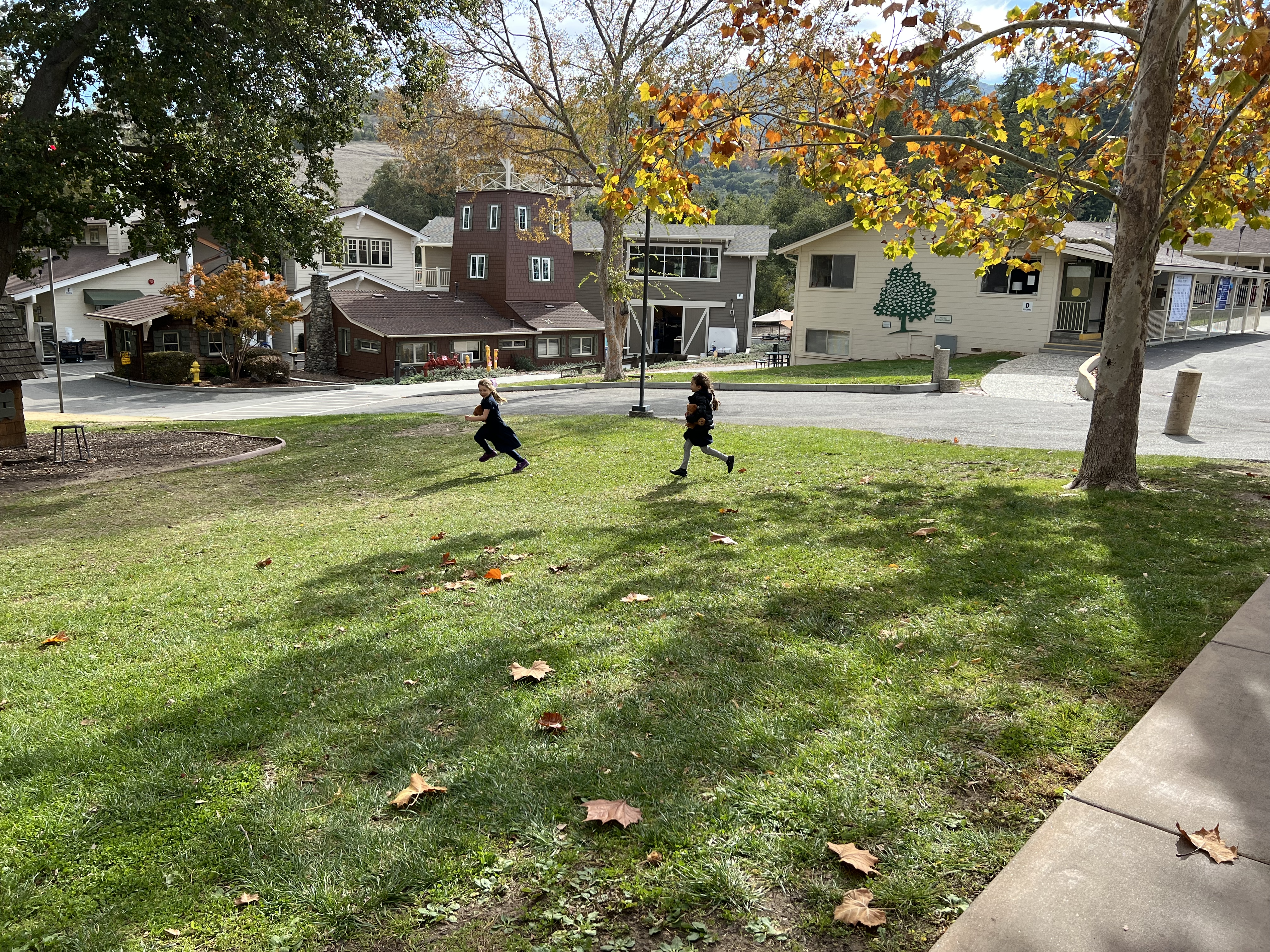Welcome to our Curriculum Connections! This is your weekly periscope into classes across campus – we’ll share new learning, challenges, accomplishments, and commentary from students in Lower and Middle School. Enjoy!
Hillbrook Trees to Table – Fourth Grade Scientists Journey to Acorn Pancakes
Fourth grade scientists this week enjoyed the fruits of their labors by cooking pancakes from flour they’ve made themselves from our campus acorns! At five different cooking stations, led by volunteer teachers, students worked in small groups to follow a several-step recipe, mix the batter, pour, cook, flip, and then eat their pancakes. Measurement, turn-taking, close-reading, and observation skills all combined to produce fluffy treats. As they worked, students shared observations about the flour’s appearance, the bubbles, the pancake edges, the smell, taste and texture as well as connections to prior experience. Students shared comments like: “I usually make more a mess than a thing when I cook.” And, “I went to a cooking class so I’m a good cook!” As well as noticings like, “It tastes like brown bread” and, “I guess it basically tastes a lot like it smells.” The acorn flour has been pain-stakingly made over the course of weeks as part of fourth graders’ study of oak woodland habitats. Students collected the acorns from campus, float-tested them to search for weevils and holes, shelled the acorns by hand, sorted out acorns with damaged meat, ground them with a mortar and pestle, and soaked the meal over two weeks to extract the tannins. Their teacher dried the meal in her oven on low heat then pulsed the flour in a grinder to produce the final flour. The process start-to-finish offers students one lens into how food is made from raw plants, the ways early Indigenous Peoples worked and lived in these hills, organism adaptations and interactions within a habitat, structures of organisms that serve different functions, and ways that all organisms have diverse behaviors and features that help meet their essential, common needs for survival.
Stories, Seeds, and Human Needs: Creating Community Gardens for Good in 6th Grade English
Sixth grade writers, thinkers and readers have completed the novel Seed Folks, and are using their summative written and visual projects from the book as a launching point for their next project: designing a community garden to meet identified human needs, inspired by their next non-fiction reading unit and local changemakers working in areas of food (in)security, public spaces, and access to fresh food. In their independent writing time this week in class, students wrote with, and then analyzed, adjectives that portray taste, setting, and texture, challenging themselves to be more descriptive and daring in their writing. “Dry, warm, oily, crispy, wavy, cold, smooth, saturated and crunchy,” were some of their chosen favorite adjectives to describe a delicious treat they had over the recent long weekend. A short, facilitated discussion emphasized the ways that their own word choices create imagery in peers’ minds, developing both their diction and their analysis skills. Their teacher helped them also notice global, familial, and cultural connections they each made through the foods they wrote about, prompting connections to the choices they will make about what to grow in their community garden designs and connections to real-world, food-focused changemakers they have been studying (including Alice Waters and “Guerilla Gardener” Ron Finley). To start thinking about their gardens, students generated a range of needs all humans have and then categorized them by importance– healthy food, irrigation for crops, clean air, shelter, and trees made the top level, while sleep, happiness, other humans, warmth, education and tech filled out tiers two and three. You might ask our students how their vocabulary practice these past two weeks impacted food security in partnership with the United Nations, or what foods they think their users will most need and enjoy in the garden they design.
